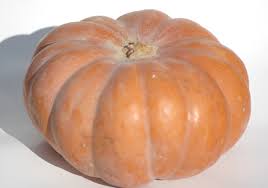This question is essentially the reverse of this older one. Can I safely substitute canned pumpkin for fresh pumpkin in a pumpkin soup recipe? If so, should I expect any side effects in taste or consistency, and, if so, are there any corrections I should make to offset this?
-
1Do you know if the pumpkin soup recipe was expecting a particular kind of fresh pumpkin?– Cascabel ♦Commented Nov 1, 2016 at 3:03
-
1To build on Jefromi's clarification -- does the pumpkin soup recipe specify how to prepare the fresh pumpkin (if at all) before adding it as an ingredient?– AthanasiusCommented Nov 1, 2016 at 4:50
-
The recipe (NYTimes: Potage au Potiron) seems to just say "scoop it out of the pumpkin and add it to the pot."– templatetypedefCommented Nov 1, 2016 at 5:36
-
There is more information there: 8-10 inches in diameter. (and given that it was published for an American audience, presumably the usual round orange kind, since they didn't say otherwise)– Cascabel ♦Commented Nov 1, 2016 at 6:02
2 Answers
As André Soltner is basing his recipe from recollections of growing up in Alsace, it may be that it was not the garden pumpkin, as it's known and which resembles the large US variety most familiar as decoration.
Several of the many grown in the Alsation region might be better suited to soups and other recipes.
The Hokkaido, similar to Hubbard, has a very hard outer skin, and very dark orange flesh (image courtesy of Wikipedia).
The Muskat-kürbis has bright orange flesh, and is used as a vegetable and for soups, in desserts, as well as being made into jam (image from Kostenlose).
As canned pumpkin is denser, it may give you the result you're looking for in the NYTimes recipe.
In my experience, canned pumpkin is usually better than fresh in a pureed recipe. The only thing you might experience is that you will want to thin the soup more because the flavor is more concentrated.
-
My experience as well. Something about canning makes canned pumpkin more flavorful.– PaulbCommented Nov 2, 2016 at 22:03


